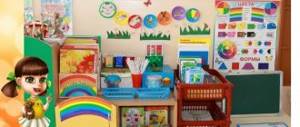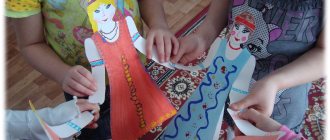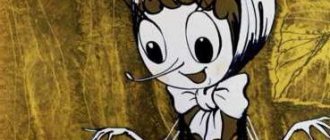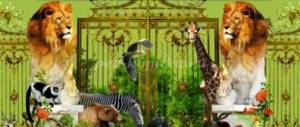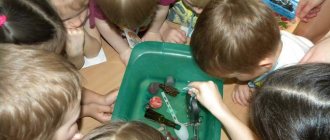Technology of collecting in children's educational activities
Venglevskaya N.V. Technology of collecting in children's educational activities // Sovushka. 2020. N2(12). URL: https://kssovushka.ru/zhurnal/12/ (date of access: 10.10.2020).
Order No. 109182
In China they say:
“Whoever has a hobby,
lives two lives.”
Modern requirements imposed by the state on the quality of educational activities in kindergarten imply that the teacher must possess the necessary educational technologies.
Technology comes from the Greek words “craft, art” and “law, science” - it is the science of craftsmanship.
Pedagogical technology is a system of functioning of all components of the pedagogical process, built on a scientific basis, programmed in time and space and leading to the intended results (G.K. Selevko).
Throughout preschool childhood, along with play activities, cognitive activity is of great importance in the development of a child’s personality, which is understood not only as the process of acquiring knowledge, skills and abilities, but mainly as the search for knowledge, acquiring it independently or under the guidance of an adult. process of interaction and cooperation.
The development of cognitive interest contributes to the formation of a personal position in understanding the world around us, thereby ensuring readiness for school. Among the means of developing the cognitive interest of preschoolers, one can highlight collecting.
Collecting (from the Latin collection – gathering, gathering). is a systematic collection of homogeneous objects of scientific, artistic, and literary interest.
Collecting is one of the forms of non-traditional education for preschoolers. In the process of collecting, a process of accumulation of knowledge occurs, then the information received is systematized and a readiness to understand the world around us is formed. In the process of examining objects, preschoolers learn to solve intellectual problems and master the prerequisites for learning activities.
Today there are several most common types of collecting:
- kinoclephilia: collecting very small toys.
- legophilia: collecting toys and construction sets produced under the Lego brand.
- plangonology - collecting different dolls.
- phyllodia – collecting packages.
- philately - collecting postage stamps.
- bonistics - collecting various banknotes printed on paper.
- Numismatics – collecting various coins.
Plangonology - collecting dolls.
Kinderphilia - collecting figurines from kinder surprises. Usually, toys from a specific series become collectible objects in such cases.
Barbiphilia is a collection of Barbie dolls and everything connected with them - outfits, accessories, doll houses.
Not all authors of basic programs highlight collecting as a type of activity aimed at developing the cognitive interests of preschool children. Due to the fact that we are working under the Rainbow program, I would like to elaborate. The authors of this program, in order to form cognitive actions in children, develop consciousness, develop their interests, curiosity and cognitive motivation, recommend creating collections.
You need to start collecting with children in early preschool age. At this age, children begin to gather, which is the basis of collecting. With children of this age, the teacher creates treasures - wonderful bags or boxes. Together with parents, they make boxes or sew bags for each child, in which the child can store small objects in which there are no bright manifestations of the child’s individuality, but gender is visible (boys collect parts, springs, cars; girls - handkerchiefs, rags, hairpins) .
In middle preschool age, in jointly organized activities, children get acquainted with hand-made materials - fabric, paper, threads, and collections are created from samples, which will be supplemented in the process. Children, working with the collection, learn about the different properties of objects. Based on the ideas they receive, children formulate rules for handling things.
In older preschool age, with the development of individual cognitive interests, children's collecting begins to take on the form of collecting, that is, identifying, collecting, studying and systematizing objects of interest, repeatedly returning to what they have collected, admiring, examining, demonstrating to peers and parents.
Due to the fact that we work in a group for children of senior preschool age, our group has collected different collections, both ready-made, purchased in a store, and made together with children. The collections are freely available to children and are located in the experimentation center.
We have divided our collections into groups:
Collective - the teacher and children or children and parents take part in the creation of collections.
Individual - the child collects a collection on his own and, most often, the collection contains items of different purposes and uses.
Home collections are collections that a child collects at home with the help of his parents.
Temporary are collections collected on specific topics for a short time. Temporary collections include seasonal collections on the following topics:
“Golden Autumn”, “Gifts of the Snow Queen”, which helps children better remember the signs of the seasons.
Long lasting ones are collections of natural materials, paper, fabrics, candy wrappers, postcards - these are exhibits that can be touched and examined.
In jointly organized activities, collections were created:
Collection of buttons - in the process of creating this collection, children independently selected buttons by size, color, shape, material (iron, plastic, wood), and learned to sew them on.
Fabric collection – “Select according to sample”, “What is it made from...”.
Collection of paper machines – one day, while looking at the collection of machines we brought from home, we decided to create our own collection of paper machines. To do this, the boys learned to work with a drawing (which parts can be cut out and which cannot), in the process they solved problematic situations, but found a way out, for example, a part was cut off that needed to be glued, What to do?
Collection of postcards - we divided the postcards in our collection by topic: these are postcards for holidays (birthday, March 8, New Year). For the cognitive development of children, interesting series of postcards are fish, dogs, flowers, cities. We use these series both in direct educational activities and in joint activities. Speech games “describe”.
During direct educational activities with children, we got acquainted with the life and way of life of ancient people. When they looked at the wall paintings, the children became interested in why there was no paper at that time. And so we tried to answer the question of when, where and how paper appeared. In this regard, the research project “The Magic World of Paper” was developed.
The goal of this project is to create conditions for the development of preschool children through children’s ideas about paper and the possibilities of its use.
Tasks:
- Introduce the history of paper
- To form ideas about the types of paper, its properties, and its use by people.
- To instill in children the need to be careful with paper and about the limited resources in nature.
- Form the prerequisites for search activities.
The work was carried out in three stages:
At stage I, children learned when and where paper was invented, what they wrote on before paper was invented. At this stage, we had conversations with children, watched presentations, and looked for information in encyclopedias. They looked for information together with their parents, then the children shared the information with each other.
At stage II, we selected material for the collection (when the children learned that in ancient Rus' they wrote on birch bark, it appeared in our collection.) At this stage we studied the properties of paper.
Is the paper transparent?
The conclusion was drawn: the paper is opaque, the thicker the paper, the less light it transmits.
How durable is the paper?
Thin paper is easy to tear; the thicker the paper, the more difficult it is to tear.
Which type of paper will sink faster?
Conclusion: the thinner the paper, the faster it gets wet.
At this stage we decided to try to create a paper in a group.
In the third stage, we developed a collectible album.
The collections we have collected are used for working with students, not as an object stored on a shelf, we use it as a visual handout for conducting experiments, the objects serve as counting materials, in classes on speech development (each item in the collection is a new word for replenishing vocabulary , description of an object is the formation of coherent speech). When carrying out individual activities with each student.
To clarify the parents' position, individual interviews were conducted.
It turned out that many of the parents were involved in collecting in childhood. And some continue this activity now. Many families have a positive attitude towards collecting , encourage the child’s interest in collecting any objects, create a friendly atmosphere, provide assistance to the child (buy encyclopedias, coloring books, and decorate collection boxes together) .
During the creation and addition of collections, parents of students were active participants. To replenish the collections of buttons and fabric, they brought fabric and buttons. During the project, parents and children prepared reports about the history of paper creation. Parents took part in the design of the exhibition for their children, and also presented family collections.
Literature:
- Sample educational program "Rainbow".
- Grizik T.I. Cognitive development of children 2-8 years old: the natural world and the human world: method. manual for educators. M.: education, 2015. 218 p.
- Nikolaeva A.N., Popova L.V. Collecting as a means of developing the cognitive interests of children of senior preschool age // Concept. 2020. Vol.6. pp. 242-245.
- Collecting in kindergarten as a cultural practice. URL: https://podrastu.ru/doshkolnoe-obuchenie/formy/kolleksionirovanie-v-detskom-sadu.html.
- Features of collecting in childhood. URL: https://podrastu.ru/deyatelnost/detskoe-kolleksionirovanie.html.
Types of collecting
Today there are several most common types of collecting:
- kinoclephilia: collecting very small toys.
- legophilia: collecting toys and construction sets produced under the Lego brand.
- plangonology - collecting different dolls.
- phyllodia – collecting packages.
- philately - collecting postage stamps.
- bonistics - collecting various banknotes printed on paper.
- Numismatics – collecting various coins.
For children, slightly different collectibles will be more understandable:
- books
- postcards
- magnets with pictures
- leaves and flowers for herbarium
- model cars
- CDs with songs
and so on.
These are just a few of the things kids love to collect. You can collect a variety of objects: the main thing is that children like it, it is understandable and close to them, and also enriches their understanding of the world around them.
Decorating the walls in the locker room in kindergarten: ideas
One of the methods of soft adaptation of a child in a children's group is photographs of parents, which can be viewed or touched at any time. But this does not mean that one of the walls of the locker room should turn into a memorial plaque. It should be beautiful, original and colorful. This is a great idea for decorating the walls in a kindergarten locker room:
Wall decoration in the locker room in kindergarten
- You can frame photos with game elements.
- Imagine a large and bright puzzle that not only pleases the eye, but also helps kids feel the presence of their loved ones. You can even put photos of the kids themselves at different ages in such a frame - it will be funny.
Wall decoration in the locker room in kindergarten
- Photo frames-puzzles are easily completed into a complete picture, the location is easy to remember.
- This design of children's groups is not only beautiful, but also convenient, because the contingent changes and the photographs of parents, sooner or later, will need to be changed.
- These photo frames are lightweight and can be placed on any wall, even on screens, if the children's group serves as both a playroom and a bedroom.
Decorating the walls in a locker room in a kindergarten
There are many options for placement; photo frames can be not only horizontal or vertical, but also corner and prefabricated. This makes it possible to design a children’s group in a unique way and change not only the overall shape, but also fill “inconvenient” spaces. Choose what you like and let your imagination run wild.

